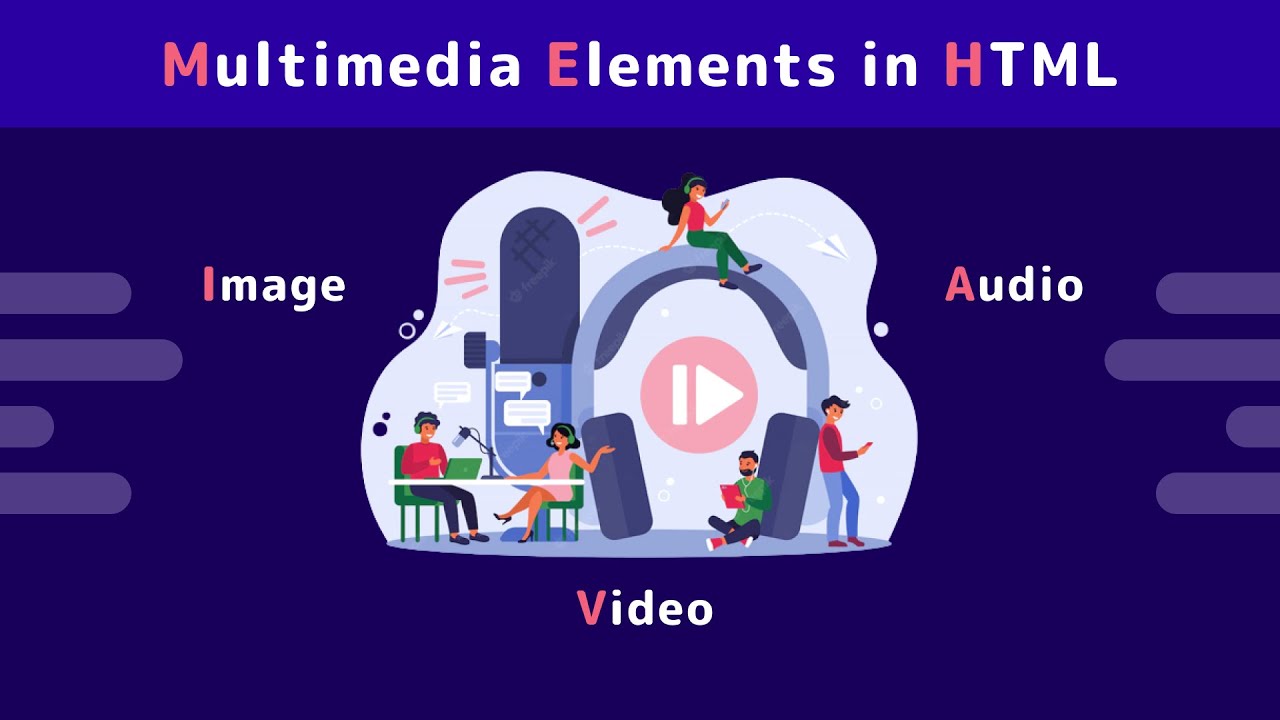Day 4: Exploring Multimedia Tags in Frontend Development
 Ashfak Pr
Ashfak Pr
Welcome back to my frontend development journey! Today marks the fourth day, and I delved into the fascinating world of multimedia tags. These tags are essential for integrating various media elements like images, videos, and audio into web pages, making them more interactive and engaging. Here's a detailed account of what I learned and accomplished today.
1. The <img> Tag
The <img> tag is used to embed images in a webpage. It's a self-closing tag and requires the src attribute to specify the path of the image. Here's a basic example:
html Copy code
<img src="image.jpg" alt="Description of the image">
src: Specifies the path to the image.alt: Provides alternative text for the image, which is useful for accessibility and when the image fails to load.
Key Points:
Ensure images are optimized for web use to improve page load times.
Use descriptive alt text for better accessibility.
2. The <audio> Tag
The <audio> tag is used to embed audio files. It can contain multiple source elements for different audio formats, ensuring compatibility across various browsers. Here's an example:
html Copy code
<audio controls> <source src="audio.mp3" type="audio/mpeg"> <source src="audio.ogg" type="audio/ogg"> Your browser does not support the audio element. </audio>
controls: Adds audio controls like play, pause, and volume.source: Defines different audio formats.
Key Points:
Provide multiple audio formats for better browser support.
Always include fallback text for unsupported browsers.
3. The <video> Tag
The <video> tag is similar to the <audio> tag but for video files. It supports multiple source elements and various attributes to control playback. Here's an example:
html Copy code
<video controls width="600"> <source src="video.mp4" type="video/mp4"> <source src="video.ogg" type="video/ogg"> Your browser does not support the video tag. </video>
controls: Adds video controls.width: Specifies the width of the video player.source: Defines different video formats.
Key Points:
Offer videos in multiple formats.
Set appropriate dimensions for better layout control.
4. The <picture> Tag
The <picture> tag is a container for multiple image resources. It allows you to define different images for different scenarios, such as varying screen sizes or resolutions. Here's an example:
html Copy code
<picture> <source srcset="path/to/image-small.jpg" media="(max-width: 600px)"> <source srcset="path/to/image-large.jpg" media="(min-width: 601px)"> <img src="path/to/default-image.jpg" alt="Description of the image"> </picture>
srcset: Specifies the image to use depending on media conditions.media: Defines media queries for responsive images.
Key Points:
Use the
<picture>tag for responsive images.Optimize images for different screen sizes and resolutions.
5. Embedding External Media
Apart from native multimedia tags, you can embed external media like YouTube videos using the <iframe> tag. Here's an example:
html Copy code
<iframe width="560" height="315" src="https://www.youtube.com/embed/videoID" frameborder="0" allowfullscreen></iframe>
src: URL of the external media.allowfullscreen: Allows the media to be viewed in fullscreen mode.
Key Points:
Ensure the embedded content is properly sized for your layout.
Be mindful of potential performance impacts.
Conclusion
Today's exploration of multimedia tags was incredibly enriching. These tags not only enhance the visual and auditory appeal of web pages but also play a significant role in accessibility and user experience. As I continue my frontend development journey, mastering these tags will be crucial for creating dynamic and engaging web content.
Stay tuned for more updates as I dive deeper into the world of frontend development!
Happy coding! 🚀
Subscribe to my newsletter
Read articles from Ashfak Pr directly inside your inbox. Subscribe to the newsletter, and don't miss out.
Written by
